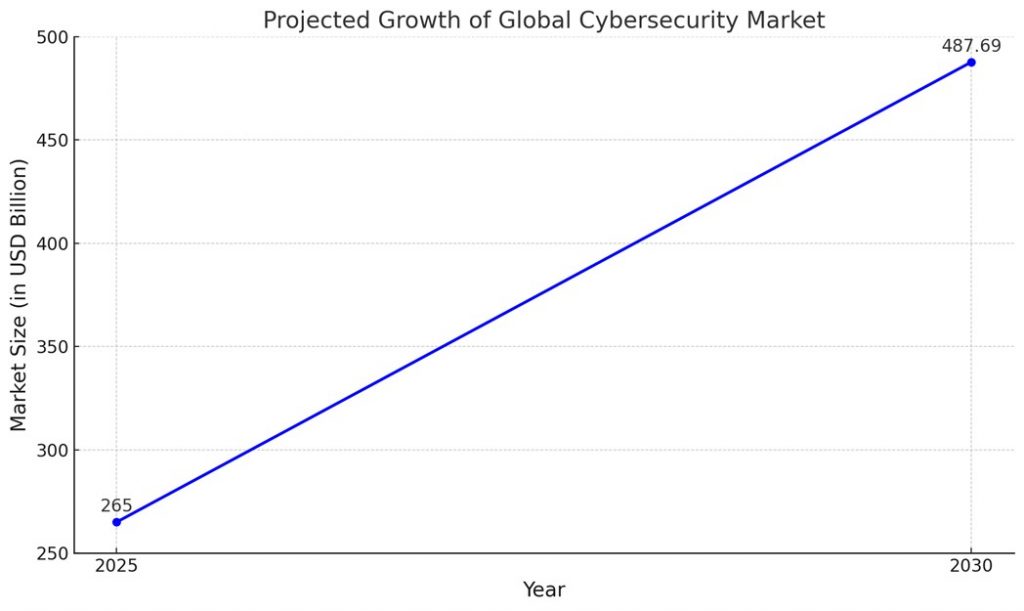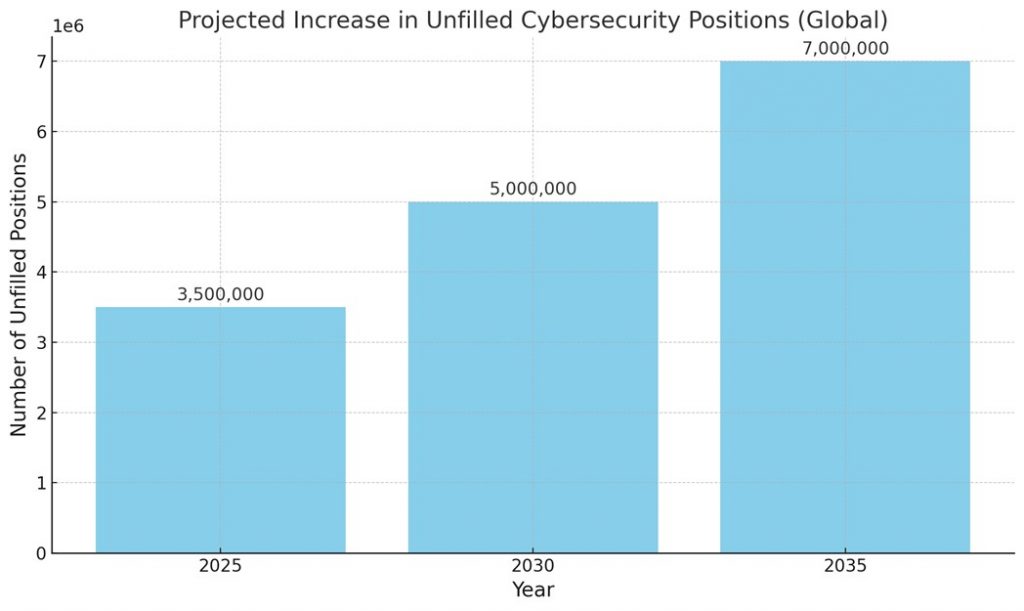
Firewalls & Future of Cybersecurity Careers in 2025
- Posted by 3.0 University
- Categories Cyber Security
- Date April 7, 2025
- Comments 0 comment
The Evolving Cybersecurity Landscape
Cybersecurity is not immune to the rapid advancements in digital innovation, prompting a re-evaluation of our system protection strategies.
Organizations are jumping on digital tools, and as they do, our attack surfaces are ballooning in ways that leave us with gaps older defences just can’t cover.
Cunning adversaries, always switching things up, now use tactics so intricate that yesterday’s methods just don’t cut it anymore.
In most cases, this ever-shifting threat landscape calls for fresh fixes; for instance, blending AI and machine learning with security measures can sharpen real-time detection and even hint at what might come next.
These new tech approaches not only help spot issues as they occur, but they also pave the way for a proactive defence, which is something we really can’t ignore.
Interestingly, the growing trend toward Zero Trust architecture points to a belief that strict, sometimes even over-the-top, verification protocols are necessary—since risks tend to pop up from both outside and, yes, even within organizations.
Generally speaking, understanding these trends is absolutely key for mapping out future cybersecurity strategies and readying the workforce for challenges; note, this is especially significant considering the looming talent shortfall in the industry.
The image, by the way, captures this transition quite well, showcasing priorities that are shifting and underlining the complex nature of the cybersecurity job market expected in 2025.
Global Cybersecurity Market Trends
Digital landscapes are shifting so fast that the cybersecurity market is now in a wild period of growth—a kind of growth driven by rapid tech upgrades and ever-changing threat scenarios.
Forecasts suggest, generally speaking, that the market might swell from around USD 234.01 billion in 2025 to nearly USD 424.14 billion by 2030, which works out to an annual growth rate of about 12.63%.
This jump really shows why cybersecurity matters, especially when it comes to protecting apps and cloud systems; organizations are focusing increasingly on shielding their assets as they adopt cloud technologies.
You can see the push for tougher application defences as a sign that companies are switching over to more advanced security methods—a change that, not surprisingly, is also opening up plenty of new job opportunities in the field.
In most cases, these trends not only point to a vital need for improved safeguards but also hint at a growing demand for skilled professionals, ultimately reshaping the job scene in the cybersecurity arena. Statista

The line chart above demonstrates the estimated growth of the global cybersecurity market, showing an increase from USD 265 billion in 2025 to USD 487.69 billion by 2030.
Moreover, the data also underlines a compound annual growth rate (CAGR) of 13.09%, accentuating the importance of advanced protective measures in an expanding market.
Emerging Cybersecurity Technologies
Cyber threats keep changing on us, and the world of cybersecurity is suddenly a lot more unpredictable.
New tech like AI, machine learning, zero trust approaches, and even quantum-safe encryption are popping up everywhere, mixing up the way we defend against attacks while also setting the stage for the next generation of security pros.
In most cases, AI and its machine learning buddy are now part and parcel of our defences, catching threats in real time as they morph and reappear.
At the same time, shifting away from the old perimeter ideas, a zero-trust mindset now forces every user and device to prove itself repeatedly, which really changes the game in a network that no longer has clear borders.
And then there’s quantum computing—as it slowly makes its mark, we’ve got this rising need for encryption that can handle future surprises, ensuring our data stays safe.
All in all, these trends are bound to shake up cybersecurity careers, demanding a whole new batch of specialized skills and, generally speaking, redrawing the job market for 2025.

The bar chart demonstrates the anticipated growth in unfilled cybersecurity positions globally from the year 2025 to 2035. The data stresses a substantial increase in demand for specialized skills in emerging technologies such as AI, zero trust security models, and quantum-safe cryptography.
The statistics illustrate a pressing need for a workforce prepared to address evolving cyber threats.
Global Cybersecurity Job Market Outlook
Cybersecurity is, seemingly, moving rapidly, and there’s a real dearth of competent people that many expect will stick around until about 2025.
The pressure on companies is palpable, and as cyberattacks keep getting trickier and more common— thus, compelling them to look for expertise in roles like cybersecurity analysts, penetration testers, and security engineers.
Over an eight-year span, Cybersecurity Ventures recorded a jump of roughly 350 percent in vacant positions, a figure that, quite frankly, shows just how strained hiring has become.
Around the globe, estimates whisper of something like 3.5 million open roles; the challenge isn’t just about recruiting but also about offering pay that really makes a difference.
Generally speaking, when you step back and examine how enterprise tech priorities are shifting, you see cybersecurity quietly taking centre stage in future strategies—helping organizations move toward a more resilient digital future.
Year | Cybersecurity Professionals (millions) | Global Workforce Gap (millions) | Source |
2022 | 4.7 | 3.4 | Nextgov/FCW |
2025 | 4.7 | 3.4 | Institute for Pervasive Cybersecurity |
Global Cybersecurity Workforce Gap and Projections
Conclusion
The commonly known and in demand roles viz. penetration testers and cybersecurity analysts are in high demand, which recounts the scenario that mixing focused training with real-world practice isn’t just appealing to have but practically critical for new entrants.
The global market, booming as it is, coupled with emerging trends such as AI and zero trust architecture shaking up traditional security methods, nudges aspiring professionals to take a more active stance in planning their careers; this approach boosts employability and sets them up to make a genuine difference in protecting vital data and infrastructure.
Overall, the urgency here underscores not only the lure of attractive pay but also the broader societal impact a cybersecurity career might offer, illustrated by trends depicted in the image.
Empower your career with 3.0 University next-gen online courses in Web3 technologies. Explore the AI-Powered Ethical Hacking Program, dive into advanced cybersecurity, and master Blockchain and AI innovations—all with global certifications.
You may also like

What are Logs in Cybersecurity?


